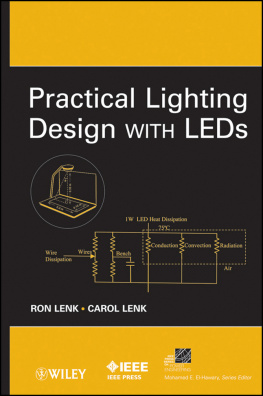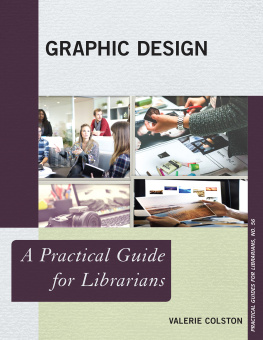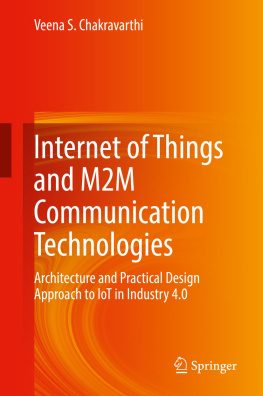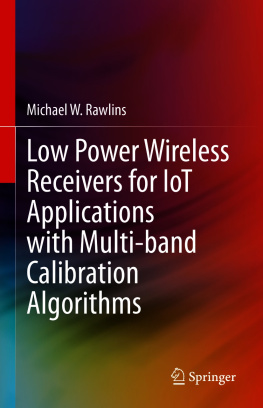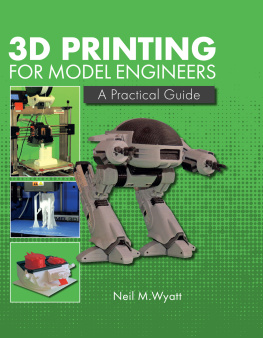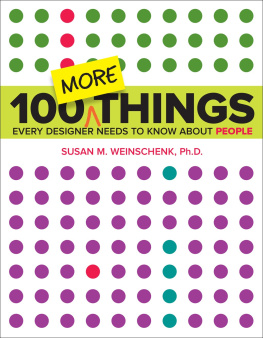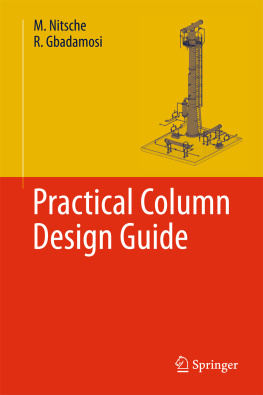IEEE Press
445 Hoes Lane
Piscataway, NJ 08854
IEEE Press Editorial Board
Lajos Hanzo, Editor in Chief
| R. Abari | M. El-Hawary | S. Nahavandi |
| J. Anderson | B. M. Hammerli | W. Reeve |
| F. Canavero | M. Lanzerotti | T. Samad |
| T. G. Croda | O. Malik | G. Zobrist |
Kenneth Moore, Director of IEEE Book and Information Services (BIS)
Copyright 2011 the Institute of Electrical and Electronics Engineers, Inc. All rights reserved.
Published by John Wiley & Sons, Inc., Hoboken, New Jersey
Published simultaneously in Canada
No part of this publication may be reproduced, stored in a retrieval system, or transmitted in any form or by any means, electronic, mechanical, photocopying, recording, scanning, or otherwise, except as permitted under Section 107 or 108 of the 1976 United States Copyright Act, without either the prior written permission of the Publisher, or authorization through payment of the appropriate per-copy fee to the Copyright Clearance Center, Inc., 222 Rosewood Drive, Danvers, MA 01923, (978) 750-8400, fax (978) 750-4470, or on the web at www.copyright.com. Requests to the Publisher for permission should be addressed to the Permissions Department, John Wiley & Sons, Inc., 111 River Street, Hoboken, NJ 07030, (201) 748-6011, fax (201) 748-6008, or online at http://www.wiley.com/go/permissions.
Limit of Liability/Disclaimer of Warranty: While the publisher and author have used their best efforts in preparing this book, they make no representations or warranties with respect to the accuracy or completeness of the contents of this book and specifically disclaim any implied warranties of merchantability or fitness for a particular purpose. No warranty may be created or extended by sales representatives or written sales materials. The advice and strategies contained herein may not be suitable for your situation. You should consult with a professional where appropriate. Neither the publisher nor author shall be liable for any loss of profit or any other commercial damages, including but not limited to special, incidental, consequential, or other damages.
For general information on our other products and services or for technical support, please contact our Customer Care Department within the United States at (800) 762-2974, outside the United States at (317) 572-3993 or fax (317) 572-4002.
Wiley also publishes its books in a variety of electronic formats. Some content that appears in print may not be available in electronic formats. For more information about Wiley products, visit our web site at www.wiley.com.
Library of Congress Cataloging-in-Publication Data:
Lenk, Ron, 1958
Practical lighting design with LEDs / by Ron Lenk, Carol Lenk.
p. cm. (IEEE Press series on power engineering ; 67)
ISBN 978-0-470-61279-8
1. Light emitting diodes. 2. Electric lampsDesign and construction. 3. Electric lightingDesign. I. Lenk, Carol. II. Title.
TK7871.89.L53L46 2011
621.32dc22
2010048267
oBook ISBN: 978-1-118-00821-8
ePDF ISBN: 978-1-118-00820-1
ePub ISBN: 978-1-118-01173-7
To our children, for being so patient
Figures
Figure 1.1 T1 (5 mm) LEDs
Figure 1.2 Fluorescent Tubes Spectral Power Distribution
Figure 1.3 LEDs Can Be Used Everywhere
Figure 1.4 Haitzs Law
Figure 2.1 Currents in a Fluorescent Tube
Figure 2.2 Various Bulb Shapes
Figure 3.1 The Electromagnetic Spectrum
Figure 3.2 Scotopic Vision is much more Sensitive than Photopic Vision
Figure 3.3 Emission Spectra of Four Common Light Sources
Figure 3.4 Solar Radiation Spectrum
Figure 3.5 One Steradian Intersects 1 m2 of Area of a 1 m Radius Ball
Figure 3.6 Solid Angle in Steradians versus Half Beam Angle in Degrees
Figure 3.7 Definition of Beam Angle
Figure 3.8 Typical Lambertian Radiation Pattern
Figure 3.9 Dimensions for a USB Keyboard Light Design
Figure 3.10 Spectra of Neutral-White and Warm-White LEDs
Figure 3.11 CIE 1931 ( x , y ) Chromaticity Space, Showing the Planck Line and Lines of Constant CCT
Figure 3.12 ( x , y ) Chromaticity Diagram Showing CCT and 7-Step MacAdam Ellipses
Figure 3.13 Cool White Fluorescent 4100 K, CRI 60; Incandescent, 2800 K, CRI 100; Reveal Incandescent 2800 K, CRI 78
Figure 3.14 Approximate Munsell Test Color Samples
Figure 3.15 Circadian Rhythm Sensitivity
Figure 3.16 Identical Gray Boxes Look Different Depending on Their Background
Figure 4.1 Reverse Bias Protection
Figure 4.2 LEDs with Reverse Bias Protection
Figure 4.3 Light Output as a Function of Current
Figure 4.4 Forward Voltage as a Function of Current
Figure 4.5 Efficacy versus Drive Current
Figure 4.6 Light Output as a Function of Wavelength
Figure 4.7 Many LEDs Have Poor R9
Figure 4.8 ( x , y ) as a Function of Current
Figure 4.9 Different Output Light Distributions Are Available
Figure 4.10 Neutral-White Bin Structure
Figure 5.1 Brightness as a Function of Temperature
Figure 5.2 LED Temperature Profile for Parameters Given in Text
Figure 5.3 Forward Voltage as a Function of Current
Figure 6.1 Thermal Model for LED Example
Figure 6.2 Thermal Model of Two Parallel Thermal Paths
Figure 6.3 LED Temperature as a Function of Time
Figure 6.4 There Are Many Thermal Paths to Ambient
Figure 6.5 Estimating Temperature Rise from Power Density
Figure 6.6 An LED Heat Sink
Figure 7.1 12 V Battery I-V Curve
Figure 7.2 Alkaline-Cell Battery Voltage as a Function of Time with a Resistive Load
Figure 7.3 Operating a Transistor in Linear Mode Is Inefficient
Figure 7.4 When the Transistor Is On, Current in the Inductor Increases; When the Transistor Is Off, Current in the Inductor Decreases
Figure 7.5 LM3405 Schematic for Buck
Figure 7.6 FAN5333A Schematic for Boost
Figure 7.7 HV9910 Schematic for Buck-Boost
Figure 7.8 Pulse Width Modulation Turns the Current Rapidly On and Off to Get an Average Current
Figure 7.9 Dimming Circuit
Figure 7.10 The Effect of the Current Sense Resistor Is Compensated by Putting One in Series with Each String
Figure 7.11 LED Forward Voltage Variation Can Be Compensated at the Cost of Additional Power
Figure 7.12 Ballasting LED Strings with Total Current Sensing
Figure 8.1 Block Diagram of AC SMPS for LED Lighting
Figure 8.2 A Bridge Rectifier
Figure 8.3 Half-wave Rectification
Figure 8.4 Reducing the Ripple from a Bridge Rectifier with a Capacitor
Figure 8.5 Running LEDs Directly Off-Line
Figure 8.6 How the Off-Line Buck Works
Figure 8.7 A Nonisolated Off-Line LED Driver
Figure 8.8 Adding a Transformer Makes the Converter into a Forward
Figure 8.9 Adding a Transformer Makes the Converter into a Flyback
Figure 8.10 Protecting the HV9910 from High Voltages
Figure 8.11 Resistors Balance Voltages for Series Capacitors
Figure 8.12 Normal Mode EMI Filtering for a Two-Wire Input
Figure 8.13 Common Mode EMI Filtering Added for a Three-Wire Input
Figure 8.14 Current Loops May Cause EMI Problems; Reducing Loop Area Helps
Figure 8.15 A Big Capacitor Maintains Constant Voltage During the Line Cycle, Generating Large Peak Currents and Bad Power Factor
Figure 8.16 A Smaller and Cheaper PFC
Figure 8.17 Simple Power Factor Correction Circuit
Figure 8.18 Adding an MOV to the Design Protects It Moderately Well from Lightning

